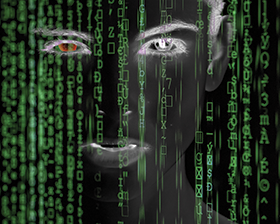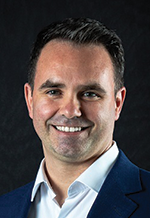

Facial recognition technology has advanced dramatically over the past few years and now, helped by Covid-19, has become the go-to access mechanism for organisations looking to automate biometric identification and temperature reading. In this article, we look at the future of facial biometrics in the access and surveillance worlds by asking for input from three of the leading manufacturers in the field:
- Hendrik Combrinck, MD, ZKTeco South Africa
- Nicolas Garcia, sales director (Biometric Terminals), Middle East & Africa, IDEMIA
- Walter Rautenbach, MD of neaMetrics, the distributor of Suprema in southern Africa
Hi-Tech Security Solutions: If we look two to three years into the future, will facial biometrics be as popular (or more popular) in terms of being rolled out broadly across different areas of society? Will companies revert to other biometric modalities that are cheaper and simpler?
Hendrik Combrinck: Facial recognition will definitely be much more popular as a day-to-day biometric technology as it is spurred on by a touchless drive because of the pandemic, but also because the technology has become much more accurate and cost-effective. We are now at the point where facial recognition devices are almost the same cost as the fingerprint terminals.
Nicolas Garcia: The chosen type of biometric modality (facial, iris, fingerprints etc.) always depends on use cases, security requirements and preferences, but can also be influenced by cultural habits, beliefs or others factors. In today’s context when the world is starting to come out of lockdowns with caution, sanitation measures such as wearing of masks will still be enforced to ensure the health and safety of people. At the same time, security cannot be compromised so biometric terminals must combine a high level of accuracy for real security and compatibility with sanitary policies as well as convenience for easier user acceptance.
The future will be contactless, whether it is with fingerprint or facial biometrics.
Walter Rautenbach: Facial recognition technology in the future can only advance further as it continues to be adopted in more spaces across the globe and becomes the new normal for access control and user authentication. The technology has shown significant advantages that come with its utilisation, while its acceptance across various sectors increases.
In the introduction of any new technology, especially where people’s identity is used for authentication, it is common to find some level of resistance in using the products. However, with facial recognition technology, we have noted its acceptance and believe its market share compared to other modalities will become far more popular, attributed to its ease-of-use and non-contact nature and therefore to its overall contribution in promoting general health and hygiene in shared and private spaces.



When a new technology comes about there is often a tendency for everyone to jump on-board and begin using it. However, this is not the case with facial recognition in the access control arena because change costs money and at present, this is seriously lacking and it is also not practical in all cases.
Some facial recognition downfalls range from susceptibility to light conditions, ensuring it is an actual person and not a photo (liveness detection) as well as if it is suitable for its reference database. All the above, except the last, have been addressed through specific solutions. For example, facial recognition terminals use specialised cameras to overcome excessive light, or IR or other 3D sensors for when it is dark.
In the areas of liveness detection there have also been an array of techniques, from hardware sensors to deep learning algorithms, with new standard testing platforms such as iBeta, where vendors can test their liveness detection. With the growth through popularity, convenience and ‘non-touch’ initiatives, this will continue to develop dramatically.
Will face recognition replace fingerprints? To a great extent it will become even more popular, but replacement will depend on the application type and one must always remember that fingerprints originated from leaving them on artefacts, be it clay tablets intentionally for positive identification or left by accident while committing a crime.
Hi-Tech Security Solutions: When will we see facial recognition being used for information security – such as logging into your laptop? This functionality is already available, as is fingerprint ‘login’ technologies, but it is not broadly used in the business world (except for accessing mobile devices where people seem to have no issues using biometrics).
Hendrik Combrinck: The Asus laptop I am using to write these answers on does allow me to log into it by using built-in infrared camera and the Microsoft Hello platform. I do think that this will definitely become more popular as the PC and laptop manufacturers start realising the user-friendliness and convenience it brings to users.
Walter Rautenbach: Facial login for Windows has been available for a while and is quite convenient, especially since it can, unlike fingerprints, continuously monitor if you are there. Add-ons therefore include automatically locking your PC if you are not there.
Why this has not become the norm baffles me. I think on dedicated platforms, such as Apple, no one else can jump in and replace logins with face as Apple only can do that. With more generic or commonly used laptops and Windows specifically, most face vendors know that Microsoft has been considering this for a long time and once they bring it out their hard work would go down the drain.
On the other side of the line, it might be speculated that Microsoft is and has been, holding it back for the same reasons that Apple did for so long, which is if it is not secure and causes general breaches, then their reputation would be damaged. Or perhaps they feared that consumers would worry about what else they access the camera for.
Hi-Tech Security Solutions: When considering cybersecurity, PoPIA and general privacy issues, as well as people’s reluctance to use facial recognition (except for their mobile devices and social media), how do your facial biometric technologies ensure the security and privacy of personal data?
Hendrik Combrinck: There are three aspects that need to be looked at when securing peoples’ personal data, these are securing the data on the device, securing the data in software and then securing the data when transferring it from the device to the software or vice versa. We do give the end user the ability to use a combination data encryption as well as HTTPS protocols when the system is set up. Keeping in mind that best data protection procedures must also be followed when the end user is handling this information, especially in the facial enrolment process where pictures of the people are involved.
Nicolas Garcia: At IDEMIA we understand privacy concerns are an important issue the industry needs to address. Within the field of facial recognition solutions, IDEMIA (a French company and therefore exposed to the stringent GDPR data privacy regulations enforced in EU) has anticipated privacy concerns by setting up a self-regulation system with protective measures for end users.

- Individual biometric data, like fingerprints or face images are not stored by IDEMIA. The biometric data is reduced and changed into biometric characteristic points, with their own template and biometric code. This, in turn, is secured before processing.
- Only companies that install these devices have highly secure access to this data, pursuant to current regulations.
- At IDEMIA we firmly believe that people need to know how their data is used, how long it is saved and why.
- For facial recognition specifically, for our VisionPass device, we have designed the ‘intention area’ concept, which is a 70 cm ‘privacy bubble’ ensuring that only the actual user’s face is captured and not surrounding people.
It serves to note that it is physically impossible to recreate the image of the fingerprint or face from the template, as templates only keep specific points and discard all other information from the original picture. Furthermore, our solution uses advanced encryption methodology to ensure the safety of the system.
Walter Rautenbach: For us there is no difference between different modalities. Individuals’ data is private regardless whether it is fingerprint or face and should be treated the same. We therefore apply this across the board.
All data relating to people entered onto Suprema products, from a hardware and software perspective, is encrypted while in storage and while transmitted between server and hardware. Personal data captured into the system such as face and fingerprint templates are protected and irreversible. Even if they fall into the wrong hands, these cannot be reversed back into an actual live image of a person’s face or fingerprint.
Server encryption ensures that all data relating to a person is fully encrypted and nothing leads back to a specific user. Protecting communication against data breaches is done by securing all communication between all the components involved. Suprema solutions have long achieved GDPR compliance and ISO27001 plus ISO27701 certifications to satisfy compliance requirements for international standards for data protection and management.
Suprema cybersecurity features include:
• Irreversible biometric template protection.
• Personal data protection.
• Communication protection against malware and data breaches.
• Physical protection against edge devices.
• Full audit trail for proof of compliance.
• Authentication for data access.
Hi-Tech Security Solutions: The world in general is averse to silos of technology, so what integration capabilities do you have in your facial recognition technologies, whether aimed at access control or within the surveillance industry?
Hendrik Combrinck: ZKTeco provides full software development kits (SDK) to integrators that gives them the capability to integrate our facial recognition hardware into any type of solution they can think of. The SDKs are very flexible and come with demo applications written in numerous programming languages to accommodate programmers from all walks of life. Our mainstream software that is already integrated with our facial recognition devices also has application programming interfaces (API) that can be used when an integrator doesn’t want to reinvent the wheel and just wants to query our databases.
Nicolas Garcia: Our technology is completely interoperable, modular and able to integrate with other devices in different use cases. This is one of our strengths. We have teamed up with all major global and regional access control manufacturers, such as the recent strategic alliance with Honeywell. These partnerships allow a multitude of different use cases and benefit building/premises operators/owners in achieving their goals, such as compliance with health and safety regulations.
We have developed our in-house solution called MorphoManager, which is used for reader management and provides basic access control functionalities. MorphoManager can also be linked to an advanced access control solution to enable biometrics capability when it is not already integrated. It comes in very handy when upgrading to biometrics with a previously installed system.
We are designing facial recognition technologies like VisionPass and Augmented Vision (a software solution which is plugged into existing CCTV networks) so that they provide the best frictionless experience. For us, this means combining a high level of security, speed and convenience
Walter Rautenbach: Integration with Suprema enables technology to jointly reach a vast group of customers and we have done so for many years with leading security product providers across the globe. There are various means of integrating with Suprema facial recognition products, including a free SDK to enable third-party technology providers to integrate the readers directly into their platforms and an API for integration with the software to send and receive data from Suprema’s BioStar 2 platform.
Integrations have been done with Suprema products and access control and surveillance systems. Added to the integration options available, Suprema has a capable team with extensive experience on all levels of the product that are able to consult and build solutions to customer requirements.
With the introduction of Suprema’s face fusion products that support visual and IR face recognition, some other interesting integration options have become available such as allowing remote visual face enrolment, that is converted to secure IR-based recognition on first contact with one of our terminals. This allows us and our clients to provide options of remote selfie enrolment, ideal for early onboarding, hospitality, as well as visitor management solutions.
Hi-Tech Security Solutions: How has your company’s facial biometric technology/technologies advanced over the past couple of years and where do you see it advancing over the next two or three years? In particular, do you expect to see facial recognition becoming a ‘norm’ in surveillance cameras as, for example, line crossing analytics is today?
Hendrik Combrinck: ZKTeco started with nearfield infrared facial recognition in 2009 when we launched the MultiBio700 terminal, which back then was the first commercially viable and affordable multi-biometric device on the market. Then in 2018 we started selling the visible light facial recognition series that combined the colour camera and the nearfield infrared camera with computer vision to give a much more user-friendly experience by increasing the pose angle of the face and recognition distance, so a proactive reading can take place. We also did listen to the end users and integrated our palm recognition technology into our devices as a second touchless biometric option.
Our new 8000 series surveillance cameras will launch soon and will already have cameras and NVRs capable of doing facial recognition of up to 20 000 faces on the edge, without needing a server.
Nicolas Garcia: Technology is at its best when it not only serves, but anticipates the needs of the situation. Facial recognition in general will be more of a norm for securing premises, especially in situations where there is a need to highlight person(s) of interest or to ensure adherence to sanitation measures.
Our technology solutions are interoperable, but the question of being localised or cloud-based is more than about functioning with different camera brands. Interest for cloud-based solutions has been growing but there is still a long way to go before this type of solution completely replaces on-site installation.
In fact, in the security industry, the solution is a hybrid: there is the software in the cloud, which works with different hardware components that have been installed at different locations. The benefits of many cloud-based solutions lie in the ability to regularly update them in terms of new features. The capital outlay in terms of infrastructure and maintenance cost can be kept lower. One added advantage of cloud-based solutions is that data is secure and protected off-site.
The disadvantage of cloud-based solutions is usually that, in case of Internet connectivity loss, the system becomes unavailable. With a hybrid model described above, access to the software becomes unavailable but the hardware should still be working as normal until connectivity returns and both software and hardware synchronise.
With cloud-based solutions, privacy concerns with data being held by a third party is a cause for pause for some entities.
Walter Rautenbach: In the security arena, there is a good reason for the integration of surveillance with access control, such as making your surveillance intelligent through access control bookmarks. A few years back, this was found to be easier achieved through integrating with NVR and DVR products to offer the same feature to our clients. This approach is still extremely effective today.
Suprema’s first facial recognition terminals were released 10 years ago, with more options becoming available to our clients each year. Suprema’s focus now is to keep improving their algorithms whilst providing additional features which make for practical implementation that adds value. A good example can be found in the new FaceStation F2. The F2 fusion multimodal terminal offers the convenience and benefit of visual face recognition, like selfie enrolment, but still providing 100% security at the door through IR face modelling and recognition.
Facial recognition on surveillance infrastructure is becoming more popular each day. As far as privacy concerns go, we believe that any technology that identifies someone as the individual they are, adds value. Surveillance is, however, not Suprema’s focus, we prefer to concentrate on secure access control terminals with hardware and software integration options that can link to surveillance.
For more information, contact ZKTeco (SA),
| Tel: | +27 11 784 3952 |
| Email: | [email protected] |
| www: | www.suprema.co.za |
| Articles: | More information and articles about Suprema |
| Tel: | +27 11 601 5500 |
| Email: | [email protected] |
| www: | www.idemia.com |
| Articles: | More information and articles about IDEMIA |
| Tel: | +27 12 259 1047 |
| Email: | [email protected] |
| www: | www.zkteco.co.za |
| Articles: | More information and articles about ZKTeco |
| Tel: | +27 11 543 5800 |
| Email: | [email protected] |
| www: | www.technews.co.za |
| Articles: | More information and articles about Technews Publishing |

© Technews Publishing (Pty) Ltd. | All Rights Reserved.